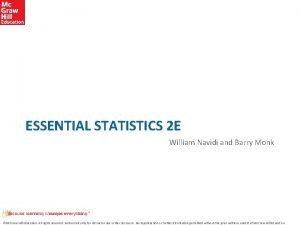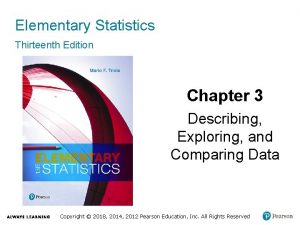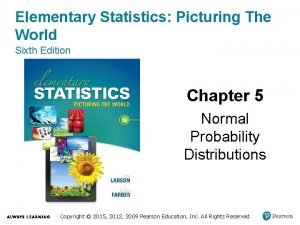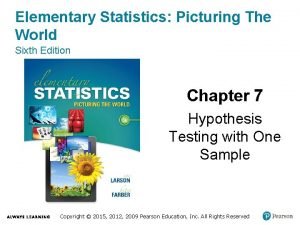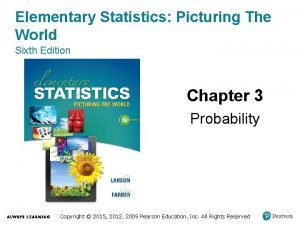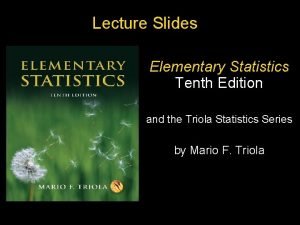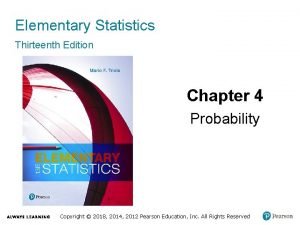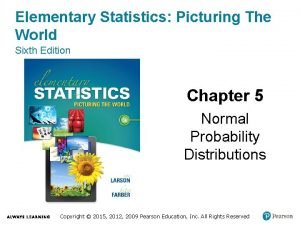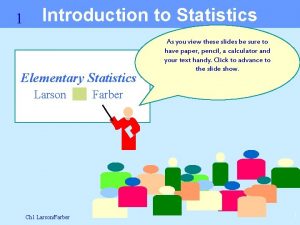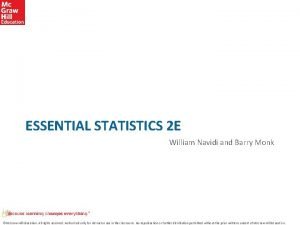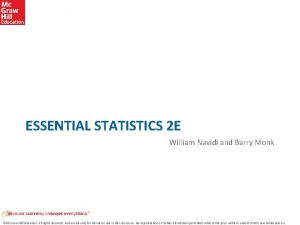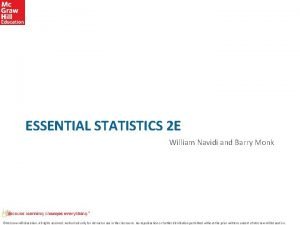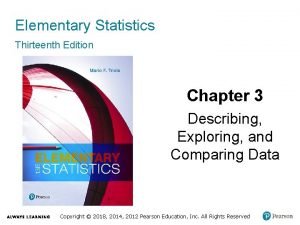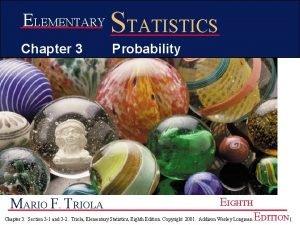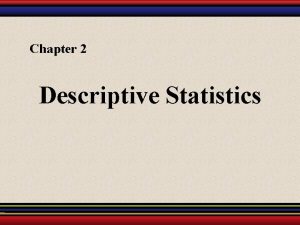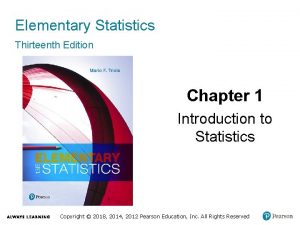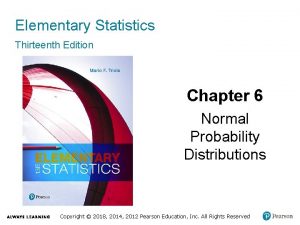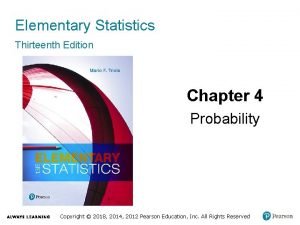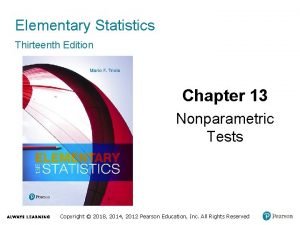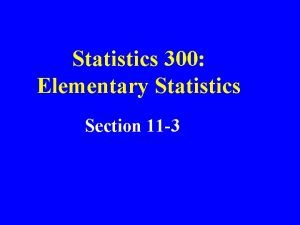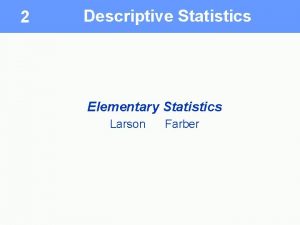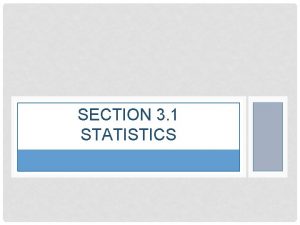Statistics 1 Elementary Statistics Section 4 4 Section


















- Slides: 18

Statistics 1: Elementary Statistics Section 4 -4 Section 4 -5

Probability • Chapter 3 – Section 2: Fundamentals – Section 3: Addition Rule – Section 4: Multiplication Rule #1 – Section 5: Multiplication Rule #2 – Section 6: Simulating Probabilities – Section 7: Counting

Multiplication Rule #1 • P(A and B) = ? –Two rolls: P(2 and then 5) = ? –Two dice: P(sum<9 and both odd) = ?

P(A and B) • Two rolls: • A : first die is 2 • B : second die is 5 • P(A and B) = ?


P(A and B) • Circled event on last slide • A : first die is 2 • B : second die is 5 • P(A and B) = 1 / 36

P(A and B) • Circled event on last slide • A : first die is 2 • B : second die is 5

P(A and B) • Does this always work? • Of course not – try the next problem using the two dice table.

P(A and B) • Two dice: • A = sum < 9 • B = both are odd • P(A) =

26 events where sum is < 9.

9 events where both are odd. But only 8 of these 9 events have sum < 9



Conditional Probability “probability of A given B” that is, B has happened or must happen

Start with the Multiplication Rule And rearrange it.

The Multiplication Rule rearranged

Concept of “Independent” outcomes

If event A does not alter the probability of event B, and vice versa, then A and B are “independent” and
 Elementary statistics william navidi pdf
Elementary statistics william navidi pdf Elementary statistics 13th edition answers
Elementary statistics 13th edition answers Elementary statistics 6th edition
Elementary statistics 6th edition P value
P value Elementary statistics picturing the world 6th edition
Elementary statistics picturing the world 6th edition Elementary statistics tenth edition
Elementary statistics tenth edition 5% guideline for cumbersome calculations
5% guideline for cumbersome calculations Elementary statistics picturing the world 6th edition
Elementary statistics picturing the world 6th edition Introduction to elementary statistics
Introduction to elementary statistics Essential statistics william navidi pdf
Essential statistics william navidi pdf William navidi essential statistics pdf
William navidi essential statistics pdf William navidi essential statistics pdf
William navidi essential statistics pdf Elementary statistics chapter 3
Elementary statistics chapter 3 Elementary statistics chapter 3
Elementary statistics chapter 3 Elementary statistics chapter 2
Elementary statistics chapter 2 Elementary statistics 13th edition chapter 1
Elementary statistics 13th edition chapter 1 Elementary statistics chapter 6
Elementary statistics chapter 6 Elementary statistics chapter 4
Elementary statistics chapter 4 Elementary statistics 13th edition
Elementary statistics 13th edition
